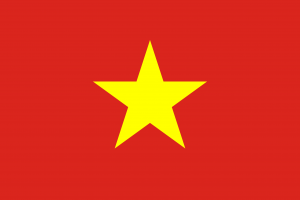Language/Vietnamese/Culture/Cuisine-and-Dining
 Հայերէն
Հայերէն Български език
Български език 官话
官话 官話
官話 Hrvatski jezik
Hrvatski jezik Český jazyk
Český jazyk Nederlands
Nederlands English
English Suomen kieli
Suomen kieli Français
Français Deutsch
Deutsch עברית
עברית हिन्दी
हिन्दी Magyar
Magyar Bahasa Indonesia
Bahasa Indonesia فارسی
فارسی Italiano
Italiano 日本語
日本語 Қазақ тілі
Қазақ тілі 한국어
한국어 Lietuvių kalba
Lietuvių kalba Νέα Ελληνικά
Νέα Ελληνικά Şimali Azərbaycanlılar
Şimali Azərbaycanlılar Język polski
Język polski Português
Português Limba Română
Limba Română Русский язык
Русский язык Српски
Српски Español
Español العربية القياسية
العربية القياسية Svenska
Svenska Wikang Tagalog
Wikang Tagalog தமிழ்
தமிழ் ภาษาไทย
ภาษาไทย Türkçe
Türkçe Українська мова
Українська мова Urdu
UrduIn this lesson, we will explore traditional Vietnamese cuisine and dining customs. Vietnamese food is known for its diverse flavors and use of fresh ingredients. As a Vietnamese language learner, understanding vocabulary related to food and dining will be helpful when interacting with locals and experiencing the culture firsthand.
Traditional Vietnamese Cuisine
Vietnamese cuisine is a mix of flavors, influenced by Chinese and French cuisine, but with its own unique twist. Vegetables, herbs, and spices are commonly used in dishes such as phở (noodle soup), bánh mì (baguette sandwich), and noodle salads. Meat and seafood are also commonly used, with pork being the most popular meat in the cuisine.
Noodles and Soup
Noodles are a staple in Vietnamese cuisine, and there are many different types of noodles used in various dishes. Phở (pronounced "fuh") is a popular Vietnamese noodle soup made with broth, rice noodles, herbs, and meat or seafood. Bún (pronounced "boon") is a type of rice vermicelli noodle used in dishes such as bún chả (grilled pork with noodles) and bún riêu (crab and tomato noodle soup).
Rice Dishes
Rice is the main staple in Vietnamese cuisine and is commonly served alongside meat, seafood, and vegetable dishes. Some popular dishes that use rice include cơm tấm (broken rice with grilled pork), cơm gà (chicken rice), and cơm chiên (fried rice).
Snacks and Street Food
Vietnamese street food is known for its diversity and has become increasingly popular with travelers. Some popular snacks and street food include bánh mì (baguette sandwiches), bánh cuốn (rice crepes stuffed with pork and mushrooms), and chả giò (fried spring rolls).
Dining Customs
In Vietnamese culture, meal times are an important part of family and social life. Meals are usually eaten with family and friends and are often served as a shared or family style. Here are some basic dining customs to keep in mind:
- It is common to use chopsticks when eating, but forks and spoons are also widely used.
- Meals are often served with a bowl of rice and shared dishes in the center of the table.
- It is polite to wait for the host or oldest person to start eating before anyone else begins to eat.
- When eating, it is common to hold the rice bowl up to your mouth and use chopsticks or a spoon to scoop food into your mouth.
- It is polite to leave a small amount of rice in your bowl to show that you are full.
- At the end of the meal, it is customary to say "Cảm ơn" (Thank you) to the host or cook.
Vocabulary
Below are some common vocabulary related to Vietnamese cuisine and dining customs.
| Vietnamese | Pronunciation | English |
|---|---|---|
| Cơm | kohm | Rice |
| Bún | boon | Rice vermicelli noodle |
| Phở | fuh | Noodle soup |
| Bánh mì | bahn mee | Baguette sandwich |
| Gà | ga | Chicken |
| Thịt heo | teet heh-oh | Pork |
| Hải sản | high sun | Seafood |
| Trà đá | trah dah | Iced tea |
| Cảm ơn | kahm uhn | Thank you |
Practice
Now that you have learned some vocabulary related to Vietnamese cuisine and dining customs, it's time to practice! Here are some questions you can ask in Vietnamese to a friend or language partner:
- Bạn thích ăn gì nhất? (What is your favorite food?)
- Bạn có muốn cùng tôi đi ăn bún chả không? (Do you want to go eat grilled pork with noodles with me?)
- Thực đơn có gì? (What is on the menu?)
- Bạn ăn chua không? (Do you like sour food?)
Sources

